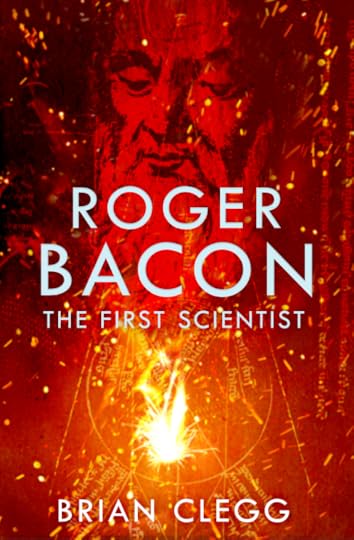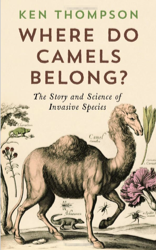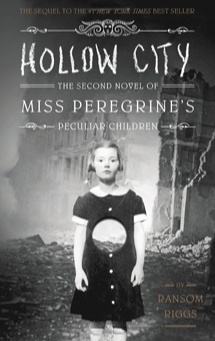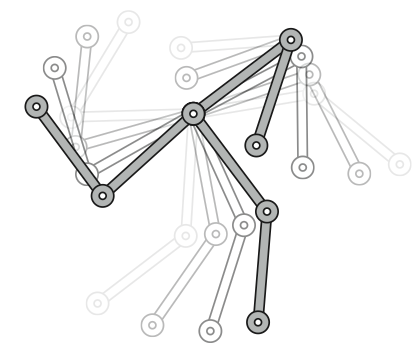Brian Clegg's Blog, page 100
March 21, 2014
Finding Roger - #1 - Get The Right Bacon
 It is over ten years now since I wrote my book about Roger Bacon. Purely by coincidence I find myself writing two separate magazine features with a flavour of Bacon about them - so I thought it would be interesting to blog an occasional series of posts about some of the aspects of the the great RB that won't be appearing in the articles.
It is over ten years now since I wrote my book about Roger Bacon. Purely by coincidence I find myself writing two separate magazine features with a flavour of Bacon about them - so I thought it would be interesting to blog an occasional series of posts about some of the aspects of the the great RB that won't be appearing in the articles.For this first entry in the series, I want to make one thing very clear. There is more than one kind of Bacon, and you need to get the right one. I am not thinking Kevin Bacon here. Even in the history of science there are two Bacons to contend with. When I first told a friend I was writing a book about the thirteenth-century proto-scientist Roger Bacon, he was surprised. 'Surely,' he said, 'Bacon lived in Elizabethan times?' This astonishingly original thinker has been obscured by the shadow of his inferior namesake, Francis Bacon.
For the sake of clarity, there is, as far as we know, no relation between Francis Bacon and Roger Bacon. Francis (the Elizabethan) was primarily a politician, but was one of the first to explicitly lay out the scientific method. Roger, the medieval Franciscan friar was a natural philosopher. He seems to have performed some experiments, and certainly wrote an awful lot about science.
In my book, in tongue-in-cheek fashion, I labelled him The First Scientist. This isn't a label that can really be applied, but it's useful, if only to wind up history of science nerds. They will tell you:
He couldn't be a scientist, as the term wasn't invented until 1834. (In an analogy from 'artist'. If an artist did art, then surely a scientist did science?) This is total rubbish. To suggest you can't be something until it is named is like saying that dinosaurs didn't exist until we gave them names. Rhubarb.He didn't do any science, he just wrote about it. This isn't true. There is reasonable evidence he did some experiments, and certainly developed some original theories. He was more a theoretician than an experimental scientist - but then so was Einstein. Bacon was mostly incorrect, but then most were back then.He didn't understand what we now call science, depending too much on the word of authority. His understanding was certainly not modern - he was of his time. But he did emphasise the importance of experiment at great length, running entirely counter to the ancient Greek view, he stressed that maths was essential for science, and there is a lot of science in his 'books'*. What is definitely true is that he wasn't a good scientist in the modern sense - but why you expect the first person to achieve something to be good at it? They'd be borderline rubbish, I would have thought.In reality there can be no definitive first (and if there were, Roger isn't it), but Roger was certainly an early and prominent example of someone who was determined to find out more about nature and communicate his results, and we should cherish him, rather than dismiss him as many seem to these days.
* I say 'books' in inverted commas because most of Bacon's surviving writing is actually a book proposal, not truly a book. But what a proposal. The first volume runs to 600,000 words...
Published on March 21, 2014 02:18
March 20, 2014
Compound number one
 Some while ago I covered element #1, hydrogen, in a Royal Society of Chemistry podcast. Now it's the turn of the very first compound ever to exist - and a surprising one at that. Helium hydride.
Some while ago I covered element #1, hydrogen, in a Royal Society of Chemistry podcast. Now it's the turn of the very first compound ever to exist - and a surprising one at that. Helium hydride.With the latest science news focussed on big bang discoveries it's the ideal time to take a trip to the earliest venture into chemistry. So take a listen by clicking play on the bar at the top of the page - or if that doesn't work for you, pop over to its page on the RSC site.
Published on March 20, 2014 01:27
March 19, 2014
Spot the difference
Modern technology makes it possible for advertising to be more personal than we could ever have imagined a few years ago. We recently had this flyer through the door:

It shows a house just down the road from us, happily sold, so we are more likely to go with that estate agent. And sure enough, that very house does have a sign outside from them. But see if you can spot the difference?

The angle is different because the real board doesn't show face on, but I can assure you it's the same house, and not only is it still showing 'For Sale' it has done so for many months.
I contacted Strakers (apparently there is no apostrophe, groan), the agent, to see if they feel this is legitimate, and they say that it's fine because the house is actually sold, subject to contract, but the vendors don't want the sign changed to sold until contracts have been exchanged. Even so, for me, that top picture is just slightly too far from reality to be acceptable. What do you think?

It shows a house just down the road from us, happily sold, so we are more likely to go with that estate agent. And sure enough, that very house does have a sign outside from them. But see if you can spot the difference?

The angle is different because the real board doesn't show face on, but I can assure you it's the same house, and not only is it still showing 'For Sale' it has done so for many months.
I contacted Strakers (apparently there is no apostrophe, groan), the agent, to see if they feel this is legitimate, and they say that it's fine because the house is actually sold, subject to contract, but the vendors don't want the sign changed to sold until contracts have been exchanged. Even so, for me, that top picture is just slightly too far from reality to be acceptable. What do you think?
Published on March 19, 2014 01:32
March 18, 2014
A publisher finally understands (some of) what an author wants
Authors are generally of the opinion that most publishers couldn't run an efficient, modern business to save their lives. (To be fair, most publishers don't have the highest opinions of authors either.) One of the main reasons for this is that publishers are really bad at communicating. Now, back in the time of the quill pen (the same time period in which most publishers' accounting systems seem to have been produced), this was fairly understandable. But not in the modern, connected internettish world.
I have books with quite a few publishers, big and small. Generally the smaller ones are better at communicating with their authors, but one of the big boys has just launched a service that gets them a good, solid 8/10 on getting communication with authors right. The publisher in question is Random House (I have a couple of books with Transworld, one of their subsidiaries) and they have just launched their 'Author Portal'.
For each book you get this kind of control panel:
 You can look at numbers shipped or sold as recently as what happened next week - usually with a publisher you have to wait 6 months to get data that is way out of date. There are details of sub-rights editions and more. And there is that most shocking of publishing business numbers - the opportunity to compare shipped and sold (as books are generally supplied sale or return). All in all a brilliant picture of what is happening to your book.
You can look at numbers shipped or sold as recently as what happened next week - usually with a publisher you have to wait 6 months to get data that is way out of date. There are details of sub-rights editions and more. And there is that most shocking of publishing business numbers - the opportunity to compare shipped and sold (as books are generally supplied sale or return). All in all a brilliant picture of what is happening to your book.
And that's just the start. The author portal also allows you to buy any Random House book with a 50% discount, and gives access to those interesting articles the Bookseller usually blocks to people who don't subscribe to the magazine - plus various other goodies.
It's not perfect. There's plenty more that it could do. But the fact remains this is a really exciting development in publisher/author communication, and all publishers could do to take note.
I have books with quite a few publishers, big and small. Generally the smaller ones are better at communicating with their authors, but one of the big boys has just launched a service that gets them a good, solid 8/10 on getting communication with authors right. The publisher in question is Random House (I have a couple of books with Transworld, one of their subsidiaries) and they have just launched their 'Author Portal'.
For each book you get this kind of control panel:
 You can look at numbers shipped or sold as recently as what happened next week - usually with a publisher you have to wait 6 months to get data that is way out of date. There are details of sub-rights editions and more. And there is that most shocking of publishing business numbers - the opportunity to compare shipped and sold (as books are generally supplied sale or return). All in all a brilliant picture of what is happening to your book.
You can look at numbers shipped or sold as recently as what happened next week - usually with a publisher you have to wait 6 months to get data that is way out of date. There are details of sub-rights editions and more. And there is that most shocking of publishing business numbers - the opportunity to compare shipped and sold (as books are generally supplied sale or return). All in all a brilliant picture of what is happening to your book.And that's just the start. The author portal also allows you to buy any Random House book with a 50% discount, and gives access to those interesting articles the Bookseller usually blocks to people who don't subscribe to the magazine - plus various other goodies.
It's not perfect. There's plenty more that it could do. But the fact remains this is a really exciting development in publisher/author communication, and all publishers could do to take note.
Published on March 18, 2014 01:32
March 17, 2014
The invasion epiphany
 I have just read Ken Thompson's book Where Do Camels Belong for review, and it's one of those rare books that demands to be talked about. In the review I make the apparently outrageous claim that this book is to ecology what Darwin's Origin of Species is to evolution. By that I don't mean to minimise the importance of Origin - of course it's far more significant, because evolution is a much more fundamental part of biology. But just like Origin, Thompson's book points out an aspect of the science that is fundamentally obvious and crying out to be acknowledged, but that the experts of the time generally deny without even thinking about it.
I have just read Ken Thompson's book Where Do Camels Belong for review, and it's one of those rare books that demands to be talked about. In the review I make the apparently outrageous claim that this book is to ecology what Darwin's Origin of Species is to evolution. By that I don't mean to minimise the importance of Origin - of course it's far more significant, because evolution is a much more fundamental part of biology. But just like Origin, Thompson's book points out an aspect of the science that is fundamentally obvious and crying out to be acknowledged, but that the experts of the time generally deny without even thinking about it.In the case of Camels, the topic is invasive species. We spend large amounts of money trying to control foreign plants and animals that come to our country, terrified that these aliens are taking over the habitat of our natives (is this beginning to sound like a UKIP statement?), in a panic that the natural balance will be damaged. But as Thompson points out, almost all policy in this area is based on emotion and ignorance, rather than scientific fact.
Take a few of the points he makes.
We are very concerned about 'alien' species invading the UK - but it is almost impossible to make a sensible division between alien and native. Frankly, the decision is arbitrary. How do you tell the difference? What is a 'native' species? It's clearly not a species that has 'always' been here, because nothing currently living has 'always' been here, and most of it did not evolve in the UK. Take a familiar example - the rabbit. Is it native or alien? Rabbits were 'native' to the UK (though probably originally came from somewhere else) in previous interglacials, but were wiped out in the last encroachment of ice. So maybe they are native. But after the wipeout they were introduced by the Romans and Normans as food animals. So they're alien? But ecologists generally recognise anything introduced before 1500 has having been around long enough to be native. So native? Who knows? The division is entirely arbitrary because species have always moved from place to place to cope with variations in climate and land conditions. The concept of 'native' is a human one, not a part of nature.
Then there's the assumption that all invasive species are evil and take over, dominating the landscape. Of course they don't. If you look at the studies, they seem to show this - but this is because the studies are almost all of species like Japanese knotweed which are known to be aggressive. So the data is cherry-picked. There are also invasive native plants, like heather and bracken - but for some reason, we don't worry about them. Worse still, quite a lot of the handful of invasive species that are supposed to dominate, don't actually do so. In the US, there is panic about purple loosestrife taking over vast areas. Actually it doesn't, but because it is taller and has obvious flowers, it is more visible than the other plants around it, so appears to become a monoculture. In fact in the vast majority of cases, alien species increase diversity rather than decrease it.
Time and again, ecologists fall for that old science disaster that is confusing correlation and causality. Thompson gives a lovely example in the matter of magpies and sparrow hawks versus songbirds. It was discovered that magpies and sparrow hawks were invading the eastern parts of the UK, where they had previously been confined to the west. Songbird populations in the east plummeted. Damned predatory magpies and sparrow hawks, out of their natural environment and messing up the niche environment. Only no one thought to look at songbird populations in general. They were plummeting everywhere, not just in the areas the magpie and sparrow hawk numbers were increasing. There happened to be a correlation between the two, but the magpies and sparrow hawks weren't the cause (which was more likely to be the development of intensive agriculture).
The same kind of misunderstanding of statistics happened initially with otters and mink. When mink escaped into the wild, otter numbers went into the decline. Clearly it was competition from the evil alien. But there was, in fact, very little competition for food. Instead there was an unrelated cause reducing otter numbers. Since then, otter numbers are on the increase and they are proving very good at seeing off the much smaller mink.
A final consideration that seems to have escaped many of the ecologists is that they are not usually talking about a natural landscape, especially in the UK. Pretty well all of the UK has been changed by human intervention. Some of this is due to imports of alien food species. Bear in mind that, for instance, peas, potatoes, tomatoes, maize, pears, cabbages, apples, grapes, onions, garlic etc. etc. are not native, and all our cultivated food animals bear no resemblance to any natives (and some, like chickens, aren't native anyway). In the US around 98% of food species are alien. In the circumstance of an environment vastly changed by the hand of man, the classic ecological concept of niches where native species live in a balanced natural ecostructure is, frankly, baloney. Even pre-human there were vast numbers of species movements all the time, but we have also made huge changes to the environment which themselves influence the impact of aliens and the survivability of natives.
Thompson is not arguing for a free-for-all. We still need to control something like Japanese knotweed (just as we may need to control bracken in some circumstances). But the ridiculous levels of panic about alien invaders, and the large amounts of money spent trying to preserve things just as they were at a certain point in time is all about emotion and reaction to loaded words like 'alien', not about good science.
To see more on Thompson's book or to buy a copy, take a look at my review.
This has been a green heretic production
Published on March 17, 2014 01:24
March 13, 2014
Hollow City - Miss Peregrine II
 Very occasionally someone comes up with a really impressive and exciting new idea in fiction, a phenomenon that is particularly strong in the Young Adult/crossover market. It isn't necessary for success, of course. Anyone who had read the 'Worst Witch' series would hardly consider Harry Potter to be an original concept, but it didn't stop that doing rather well. (I'm not denying JKR's books had much more to them, just talking as a basic idea.) But in his novel Miss Peregrine's Home for Peculiar Children (reviewed here), Ransom Riggs really hit pay dirt for originality that makes you gasp.
Very occasionally someone comes up with a really impressive and exciting new idea in fiction, a phenomenon that is particularly strong in the Young Adult/crossover market. It isn't necessary for success, of course. Anyone who had read the 'Worst Witch' series would hardly consider Harry Potter to be an original concept, but it didn't stop that doing rather well. (I'm not denying JKR's books had much more to them, just talking as a basic idea.) But in his novel Miss Peregrine's Home for Peculiar Children (reviewed here), Ransom Riggs really hit pay dirt for originality that makes you gasp.The story was built around a series of weird and wonderful Victorian/Edwardian photographs, which worked brilliantly to give the story an unusual depth of atmosphere. Now Riggs is back with the sequel, Hollow City. When I reviewed the first book, I was a little concerned that the approach would pall in any future titles, but it soon drew me back in.
In fact, the photos are used very cleverly to bring us back to the action by starting with a dramatis personae with the photographs that inspired all the main characters. This is very clever - I had pretty much forgotten the detail of the plot (I'm very poor at remembering stories and can usually re-read a book in about a year almost as fresh), and this gave me some visual cues to recall and put into context what was happening.
Things are pretty dire for our heroes in this episode in the series (we are told at the back that the next volume is 'coming soon'). The 'loops' where the peculiar children reside have mostly been destroyed and their mentors captured by the evil baddies, who are made doubly nasty by being corrupted versions of the peculiar children (fallen angels, you might say). Miss Peregrine is stuck in bird form and will not be recoverable unless she is treated within a few days, adding a strong time pressure to the plot, which takes the children to wartime London.
It works very well, particularly the second half of the book. As before, Riggs piles in lots of story elements, and there's a twist that genuinely takes the reader by surprise. The best of the photos are truly bizarre and wonderful, including the image on the cover and Miss Wren's remarkable hut.
Things aren't 100 per cent perfect, though. Rather too many of the images are murky - I was reading a rather expensive (for young adult) hardback, and I would have expected better reproduction (or the selection of clearer originals - plenty of photographs of this age still have excellent contrast). I was also a bit disappointed by the use of the striking image on the cover in the storyline, which was surprisingly fleeting. And there was rather too much soul searching and wordy exposition in the early parts of the book. And the ending is very abrupt and 'to be continued'. But that didn't stop this series growing into one of my favourite YA fantasies ever, coming in just behind Alan Garner's work and the stunning Night Circus .
All in all, a must-read if, like me, you are already a Peregrine fan (if it's fuzzy in your mind, re-read the first book to get back into the swing, though it's perfectly possible to pick some of it up here), and a great addition to any YA fantasy shelf (if you haven't read the first book, do read that first).
Find out more an Amazon.co.uk and Amazon.com.
Published on March 13, 2014 01:44
March 12, 2014
The interesting history of stretchy and swingy
 Now that's what I call a pendulum
Now that's what I call a pendulum(chaotic pendulum from Dice World )Not surprisingly, science writers tend to focus on the exciting stuff. Apart from anything else, we get a lot of the less shiny bits at school, and most of us probably don't want to hear any more. You don't get far doing a popular science book on pendulums, say. But this is a bit of a shame, because science writing isn't just about explaining concepts, it's also about context, and the difference between the 'facts' of school science and the fuzzy reality of science as it truly is. So let's take the plunge.
Two favorites of the physics world are springs and pendulums, both examples of objects that undergo regular motion. Galileo is supposed to have first considered pendulums while watching a lamp swinging on a chain at Pisa cathedral. Up to then, no one had thought about the significance of a pendulum’s swing, because their ideas of motion were based on the ancient Greek concept of objects trying to get to their “perfect” place, the center of the universe. This was used to explain why items fell to Earth. But it didn’t help with something that oscillated like a pendulum.
What Galileo noticed, timing the swinging lamp with his pulse (possibly bored in a sermon), was that the time a pendulum took to swing wasn’t linked to the distance the object on the end of the pendulum travelled. Whether it made a long stroke or a short stroke, the time it took was the same. It didn’t depend on the weight on the end of the pendulum either, just the length of the string. At least, that's what they tell you at school. In fact this only applies to relatively small swings and goes out of the window for bigger ones. Galileo had a lot of interest in pendulums and inclined planes as they gave a way to study falling under gravity in a controlled way - despite the legend, the chances are he never dropped balls off the leaning tower of Pisa.
Pendulums were a breakthrough technology in making accurate clocks, but clockmakers soon found there was a problem – metal pendulum arms changed in length with the room temperature, and this resulted in variation in the timing (the swing wasn't small enough). This was overcome by using materials that don’t vary much with temperature, or by using a complex pendulum called a gridiron that linked bars of different materials whose expansion countered each other.
Springs also provide a regular, oscillating motion, provided they aren’t pulled too far. Springs (and anything else elastic, like a bungee) have a limit called the elastic limit. Pull them further than this and they transform permanently. Instead of returning to their original length when released, past the elastic limit they deform. But when springs are kept within the limits, they work according to a simple ratio discovered by Robert Hooke, one of Newton’s contemporaries. Hooke discovered that the further you stretch a spring, the more force you get. Double the stretch, double the force. Technically it’s a negative force because it goes in the opposite direction to the stretch.
Robert Hooke was on the receiving end of a barbed comment from Isaac Newton. Newton said in a letter to Hooke, “If I have seen further it is by standing on ye shoulders of giants.” This sounds modest, suggesting that Newton built on the work of others, and it is often how the quote is used. However, Hooke had a deformed back that made him seem small in stature. No one could accuse Hooke of being a giant and it seems that Newton, whose certainly despised Hooke, was getting his revenge.
Published on March 12, 2014 02:07
March 11, 2014
Scotland does the hokey-cokey
 I find the deliberations over Scottish independence fascinating. It reminds me powerfully of the hokey-cokey. In fact, the referendum probably should have had the choices:
I find the deliberations over Scottish independence fascinating. It reminds me powerfully of the hokey-cokey. In fact, the referendum probably should have had the choices:InOutShake it all aboutYesterday, former prime minister Gordon Brown (hard to remember, but he really was prime minister) was suggesting that the third option was the best. He told us that Scotland should stay in the union, but with greater autonomy, for example in terms of setting taxes.
I personally favour an independent Scotland, as despite the rhetoric from Edinburgh, my suspicion is that there is a net flow of cash from the rest of us to Scotland and I'd like to cut that off and see them pay for their 'extras' like free tuition and free prescriptions themselves. And I'd be genuinely excited to see what Scotland could do on its own. It's a dangerous experiment, but a brave one, typical of the Scottish character. However, should the vote be 'No', I can certainly see the advantages of making Scotland effectively independent but within the union. With certain provisos.
Clearly, if Scotland were in charge of its own taxation, we would no longer expect any money to go from Westminster to Scotland. I'm sure Mr Salmond wouldn't want our dirty London money either. But also we would need to redress the balance in the London parliament (as Mr S. calls it). With so much devolution it would be ridiculous if Scottish MPs had the same weight as those from the mainstream UK. (Yes, it's that old chestnut, the West Lothian question - but it's still true.)
So we would have to see a reduction in Scottish MPs at Westminster at the very least - though arguably they could be done away with entirely. Another essential, if we do keep Scottish MPs, is that they should be banned from holding any offices of state at Westminster. Having a UK Prime Minister from a Scottish seat again, for instance, would seem bizarre in such circumstances.
Alternatively we could have some English, Welsh and NI members in the Scottish parliament. But I don't think Mr S would like that.
Published on March 11, 2014 00:31
March 10, 2014
Did a 13-year-old really perform nuclear fusion at school?
 Another high school fusor in operation (not Jamie's)There was a big kerfuffle in the UK media last week when a 13-year-old schoolboy apparently made a nuclear fusion reactor at school. Jamie Edwards built the device at the Penwortham Priory Academy in Preston.
Another high school fusor in operation (not Jamie's)There was a big kerfuffle in the UK media last week when a 13-year-old schoolboy apparently made a nuclear fusion reactor at school. Jamie Edwards built the device at the Penwortham Priory Academy in Preston.I got several emails baffled by the TV news coverage, which was skimpy on details. So here's the home-brew fusion Q&A.
Could a schoolboy really build a nuclear fusion reactor? Yes, he could. We have to be a little careful about what we mean by a reactor. We're not talking a miniature power station, we're talking a device in which a very small amount of fusion takes place. Bear in mind that all you need to create a nuclear fission reactor in the same sense is a cardboard box with a lump of uranium in it. Fission will take place in the box. It's no use, but it will happen. It's the same here (though harder to make). This type of reactor dates back to the 1960s, devised by the magnificently named Philo T. Farnsworth, the hugely under-appreciated inventor who also came up with the electronic TV system (as opposed to Logie Baird's impractical electro-mechanical system).Should a schoolboy be doing this? Isn't it dangerous? Someone on the news mentioned blowing up the school! Yes, he should be doing it. First, it's absolutely brilliant a 13-year-old should have the initiative to do this, and second it wouldn't blow up the school. There's a lot of confusion over, erm, fusion. It is the reaction behind the hydrogen bomb - but it only works like that with a conventional atomic bomb to trigger it. As a stand-alone reaction it is actually very difficult to keep going. It can't go critical or explode. It does produce neutrons, which are ionising radiation, so needs to be properly shielded, and involves high voltages, which need to be treated with care, but with those provisos, it is very safe.How does it work? Fusion is the power source of the sun. When two small atomic nuclei are forced together very hard, they will fuse to form a new atom. They have to be very close to do this, as the strong nuclear force that holds the nucleus together only kicks in at very short distances - and that means overcoming a whole lot of repulsive force. If you do manage it, the new atom has less total internal energy than the original ones and the excess is released in the kinetic energy of the resultant particles. This is where the energy for the sun or a fusion power station comes from. In a magnetic confinement fusor (which is what Jamie's is), deuterium gas (hydrogen with an added neutron in the nucleus) is zapped with an electric charge, which strips off its electron, and accelerates it to a high speed. Some of those nuclei will collide, and some collisions have enough oomph to enable the charged nuclei to fuse.If a schoolboy can do it, how come it has taken us decades and we still don't have a fusion power station? There are two important things to bear in mind. One is that a fusor like this needs a lot more energy in than is produced by the fusion reaction, so it's not a candidate for power generation. The other is that to take fusion up to the sort of scale required to produce around 1 gigawatt of power (a mid-sized power station) is nightmarishly complex. Fusion reactions are very difficult to get going and keep running on this scale, especially as the charged collection of nuclei (a plasma) writhes and wriggles like a living thing, and if it touches the walls of the vessel, the fusion stops. Current best estimate for the first working fusion power station is 2050 - but if we achieve it, this a brilliant source of energy - it's green, and uses readily available fuel. And it doesn't produce radioactive waste, except for the metal in the device which will gain a low level of radioactivity, but nothing like the problems of fission waste.So was it news at all? Yes, I think it was. A good few people have made fusors, but Jamie was the youngest, and it's good to have interesting and inspiring science stuff in the news. if it encourages more teenagers to take an interest in science it's worth all the publicity. It's just a shame that the media reports were generally not very good at explaining just what was happening. Image from Wikipedia
Published on March 10, 2014 02:42
March 7, 2014
Yes, but mine has sharp spikes and causes itching
If you use Twitter you will probably be familiar with receiving a reply to a tweet you can't remember. It's easily done. Someone sees an interesting tweet and they fire off an (ideally) witty and pithy reply. But the trouble is that reply can be altogether too pithy. So, for instance, I recently got a reply:

Now, leaving aside I don't know who or what dumpy is, being a bear of little brain, I have, by now, no clue what this was a reply to, having totally forgotten what I tweeted several hours earlier. As it happens it was:

Similarly I got:

Erm, yes? No? Perhaps? Here the original was:

In this case, even knowing what the reply was to it's not entirely clear what the question was and I had to ask for clarification. As it happens, I use the lovely Tweetdeck to read my tweets, so it's easy to pull up the conversation that the reply was part of (it's just a matter of clicking that View link) - but there is still that initial feeling of total confusion.
To try overcome this, when I reply to a tweet, I try to put some context in which will tie the reply or question back to the original tweet. For instance, never use 'it'. Don't say 'Is it really?', for instance, say 'Is your nose really bright red?'
Just imagine someone is reading your tweet from scratch. That way, no end of confusion can be prevented.

Now, leaving aside I don't know who or what dumpy is, being a bear of little brain, I have, by now, no clue what this was a reply to, having totally forgotten what I tweeted several hours earlier. As it happens it was:

Similarly I got:

Erm, yes? No? Perhaps? Here the original was:

In this case, even knowing what the reply was to it's not entirely clear what the question was and I had to ask for clarification. As it happens, I use the lovely Tweetdeck to read my tweets, so it's easy to pull up the conversation that the reply was part of (it's just a matter of clicking that View link) - but there is still that initial feeling of total confusion.
To try overcome this, when I reply to a tweet, I try to put some context in which will tie the reply or question back to the original tweet. For instance, never use 'it'. Don't say 'Is it really?', for instance, say 'Is your nose really bright red?'
Just imagine someone is reading your tweet from scratch. That way, no end of confusion can be prevented.
Published on March 07, 2014 01:41



